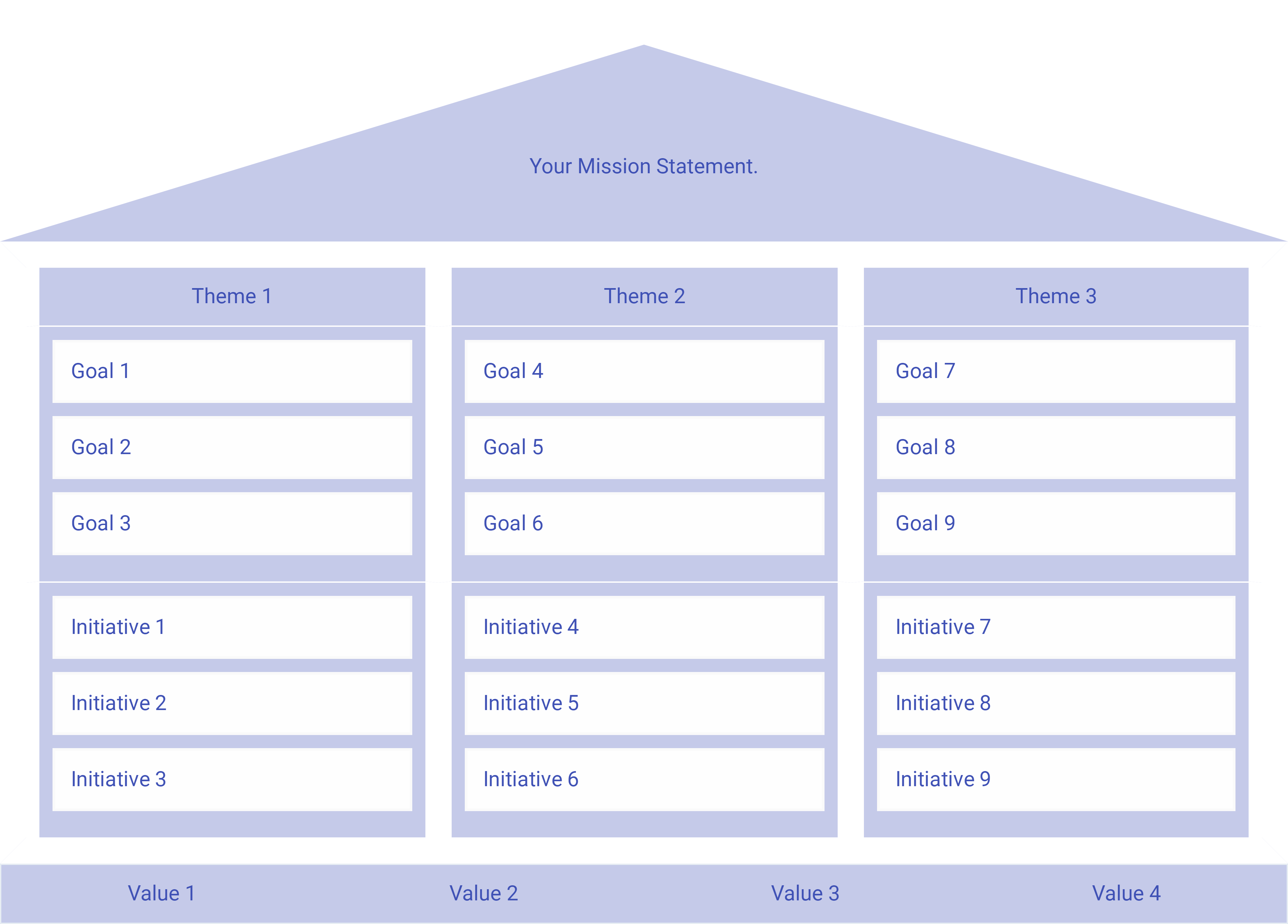 What are Themes?
What are Themes?
- Themes represent high-level strategic priorities that support your vision or mission.
- Themes are a convenient way to group related goals and initiatives.
- Themes are represented as pillars on the Strategy House.
Benefits of Themes
- Themes make it easier for staff to understand and remember your strategy.
Traps to Avoid When Setting Themes
- Avoid setting themes which are independent of each other. Your themes should be mutually supportive of your vision or mission.
- Avoid mapping themes onto organisational structure. This promotes silo thinking. Themes should span organisation boundaries to encourage cross-functional collaboration towards your strategic goals.
How many themes should a strategy have
You can have as many themes as you'd like.
However, the optimum number is about 3 to 5.
This provides enough granularity to be meaningful, while remaining focused and clear.
Too many more ends up being just a list that is harder to remember and likely to overwhelm rather than engage your team.
Examples of Themes
1. Customer-Centric Growth
-
Focus: Deepening customer relationships and expanding market share.
-
Example Initiatives: Customer experience redesign, voice of the customer programmes, hyper-personalisation.
-
Strategic Role: Enhances competitiveness and aligns value delivery with client needs.
2. Operational Excellence
-
Focus: Streamlining operations, improving quality, reducing costs.
-
Example Initiatives: Lean transformation, Six Sigma, end-to-end process automation.
-
Strategic Role: Drives efficiency, enabling reinvestment in innovation and growth.
3. Innovation & Digital Transformation
-
Focus: Embedding innovation into core operations, leveraging emerging technologies.
-
Example Initiatives: AI-enabled products, digital twins, open innovation ecosystems.
-
Strategic Role: Sustains future relevance and creates new value propositions.
4. Sustainability & Social Impact
-
Focus: Embedding ESG principles into strategic decisions.
-
Example Initiatives: Net-zero targets, circular economy models, inclusive hiring.
-
Strategic Role: Enhances brand value, regulatory compliance, and long-term resilience.
5. Talent Empowerment & Culture
-
Focus: Building a high-performing, inclusive culture.
-
Example Initiatives: Leadership development, DE&I strategy, agile workforce models.
-
Strategic Role: Supports adaptability, innovation, and engagement.
6. Market Expansion & Ecosystem Development
-
Focus: Entering new markets or forming strategic partnerships.
-
Example Initiatives: Strategic alliances, M&A, geographic expansion.
-
Strategic Role: Drives revenue diversification and strategic reach.
7. Data-Driven Decision Making
-
Focus: Using analytics and intelligence to guide actions.
-
Example Initiatives: Enterprise data platform, predictive analytics, BI dashboards.
-
Strategic Role: Improves strategic agility and responsiveness.
Where to find Themes in StratNavApp
- Sign up or sign in to StratNavApp.
- Select Direction on the Main Menu.
- Select Goals on the selector at the Top of the Screen.
- Select an existing goal or press + to add one.
- On the Goal screen, find "Linked Themes" or click "Add theme(s)" in the "Do Next" section.
- Enter a new or existing Theme and select or press Enter.
